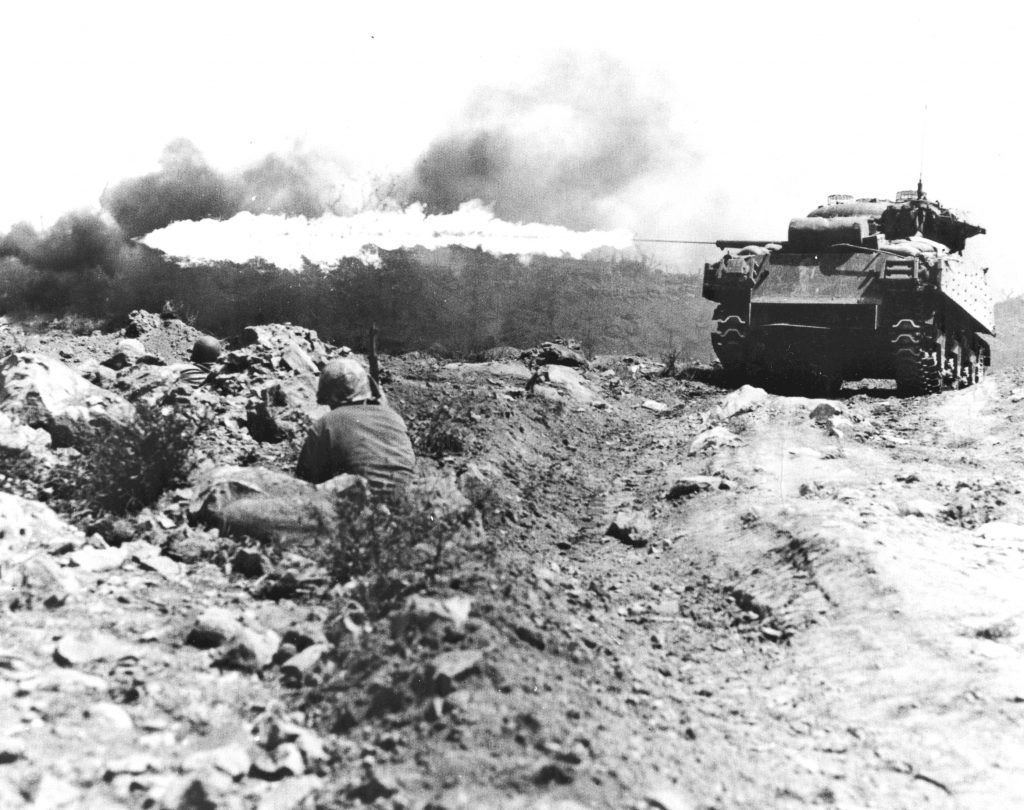Ah, February. A month that has always been synonymous with amorous pursuits. In a few days the boxes of chocolate will be flowing and the flowers will be presented to our loved ones. But the 19th of this month also commemorates the beginning of one of the bloodiest battles of WWII, the Battle of Iwo Jima.
My name is Owen, and welcome to my blog, Nametag Defilade. Lately we’ve been exploring the Battle of the Bulge in the European Theater, but I would be remiss not to touch on one of the pivotal battles in the Pacific before its anniversary passes us by.
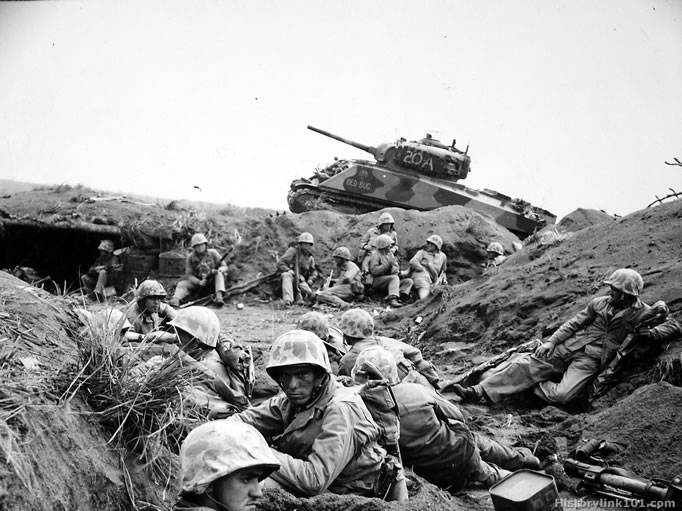 Iwo Jima (or Iwo To) is located on the Volcano Island chain roughly 750 miles south of Tokyo. As it is hinted, it is a volcanic island with relatively flat features, ideal for building an airfield. A mountain graces the southern tip of the island, named Mount Suribachi which rises about 530 feet from the ocean. Iwo Jima was selected as a “stepping stone” on the route to Okinawa because two airbases on the island fielded Japanese fighters which could attack the long-legged B-29 Superfortress bombers, and it could be used as an ad-hoc naval base should the need arise.
Iwo Jima (or Iwo To) is located on the Volcano Island chain roughly 750 miles south of Tokyo. As it is hinted, it is a volcanic island with relatively flat features, ideal for building an airfield. A mountain graces the southern tip of the island, named Mount Suribachi which rises about 530 feet from the ocean. Iwo Jima was selected as a “stepping stone” on the route to Okinawa because two airbases on the island fielded Japanese fighters which could attack the long-legged B-29 Superfortress bombers, and it could be used as an ad-hoc naval base should the need arise.
Starting in mid-June 1944, the Army Air Corps and the US Navy began a 9 month long bombardment of the island, utilizing bombers and naval artillery. The Japanese commander of the island, Lieutenant General Tadamichi Kuribayashi, began preparing his defense of the island around the same time. Knowing the situation the island faced, but also how dire the outlook for the entire Imperial Japanese fighting front was, Lieut. Gen. 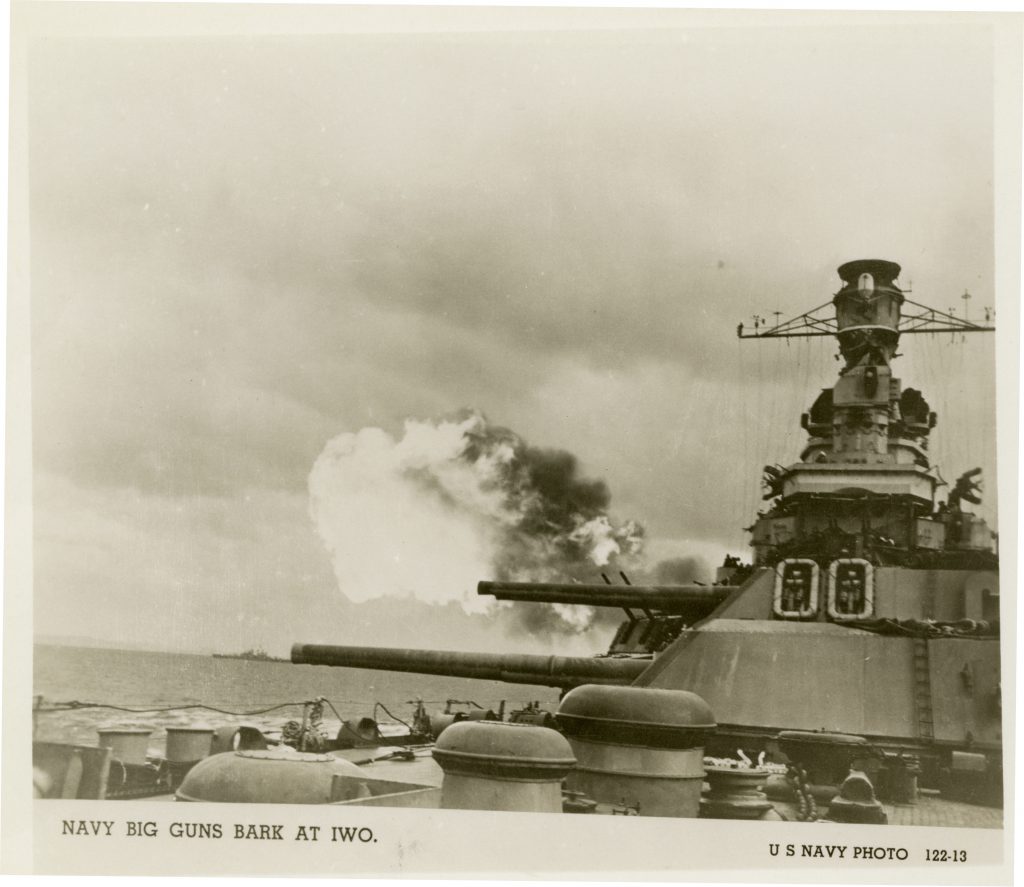 Kuribayashi looked to the defense of Peleliu for inspiration. He chose a strong “defense-in-depth” strategy, where the obstacles the enemy force would face would increase the further they got into the island’s interior. This is a stark contrast to the defense of beachheads like Normandy, which focused on repelling the invasion right on the beach where they were landing. February 19th was selected as D-day, and an intense 3-day naval bombardment commenced beforehand. On the 16th, 14 battleships, 20 cruisers, and 46 destroyers opened fire on the island. Utilizing overlapping fields of fire and specific sectors, the small size of the island and the amount of warships present meant that every square foot of Iwo Jima was within reach of the Navy’s heavy guns. When dawn broke on the morning of the 19th, nobody standing on the bridge of a battleship or heavy cruiser could be faulted in thinking the island had been pummeled into submission.
Kuribayashi looked to the defense of Peleliu for inspiration. He chose a strong “defense-in-depth” strategy, where the obstacles the enemy force would face would increase the further they got into the island’s interior. This is a stark contrast to the defense of beachheads like Normandy, which focused on repelling the invasion right on the beach where they were landing. February 19th was selected as D-day, and an intense 3-day naval bombardment commenced beforehand. On the 16th, 14 battleships, 20 cruisers, and 46 destroyers opened fire on the island. Utilizing overlapping fields of fire and specific sectors, the small size of the island and the amount of warships present meant that every square foot of Iwo Jima was within reach of the Navy’s heavy guns. When dawn broke on the morning of the 19th, nobody standing on the bridge of a battleship or heavy cruiser could be faulted in thinking the island had been pummeled into submission.
But it wasn’t. Lieutenant General Kuribayashi was aware of the US Navy’s firepower, and over the 9 months leading up to the battle, had carved into the island a network of tunnels reaching 11 miles in total, interconnecting pillboxes and other strategic points on the island. On the morning of the 19th, the island looked like a moonscape, but the Japanese forces, numbering 21,000, were largely undamaged, and waiting to strike. A minute ahead of schedule at 8:59 AM, the first Marines set foot on the volcanic black sand of Iwo Jima, to the roaring sound of dead silence. Suspecting the island’s defenses were all shot away or
forced into hiding, the Marines began deploying all along the beach and began pushing inland. At 10:00, the Japanese responded. Machine guns, mortars, artillery, and land mines all began tearing into the Marines on the island. Through the bloodbath, though, progress was being made. Navy Construction Battalions (Seabees) 31 and 133 helped bulldoze roads off the beach under withering fire, letting tanks and LVT-A’s finally get free of the loose black powder keeping them in the killing zones on the beach and move in to provide support. The vast tunnel system cause nearly insurmountable trouble for the invaders. Even when a bunker or pillbox was put out of action, minutes later it would come back to life, almost by magic as fresh troops made their way to them. As night fell and foxholes were dug on the more suitable parts of the island, Japanese forces would slip out of the tunnels and attack the unsuspecting Marines. During the days, they were supported by Sherman tanks equipped with flamethrowers (typically called Zippo or Ronson tanks) and LVT-(A)4’s, equipped with short barreled 75mm howitzers (the only LVT(A)-4 in the United States is on display at the American Heritage Museum).
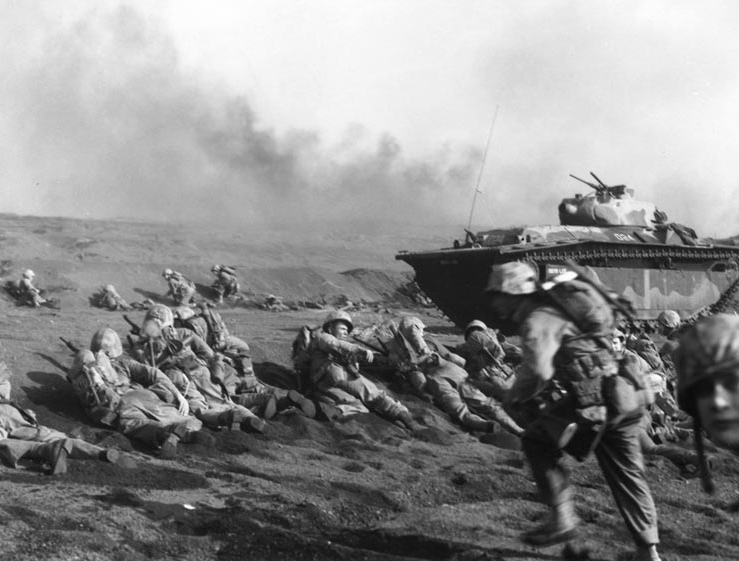
Between the devastating effect of the flame tanks and the on-call availability of the LVTs, Iwo Jima was slowly brought under American control. On February 23rd, Mount Suribachi, at least above ground, was captured and the famous photo of the flag being raised was taken by Associated Press photographer Joe Rosenthal. The fighting was far from over, though, and the Battle for Iwo Jima, especially the strongly fortified northern sectors, would continue nearly to the end of March, 1945. By the time the island was declared secure on March 26th, 1945 at 9:00 AM, the battle had cost the lives of 6,800 Americans among 26,000 casualties. On the Japanese side, the number of dead and missing varies between 17,000 and almost 19,000, with roughly 200 taken prisoner and almost 3,000 remaining in hiding. These 3,000 men would be slowly rooted out by occupying forces, but the last two wouldn’t be captured until they surrendered almost 4 years later in 1949. Iwo Jima was used as an emergency airfield for B-29s through the end of the war and remained under US occupation until 1968, when it was handed off to the Japanese Self Defense Force who still use it as a strategic base to this day.
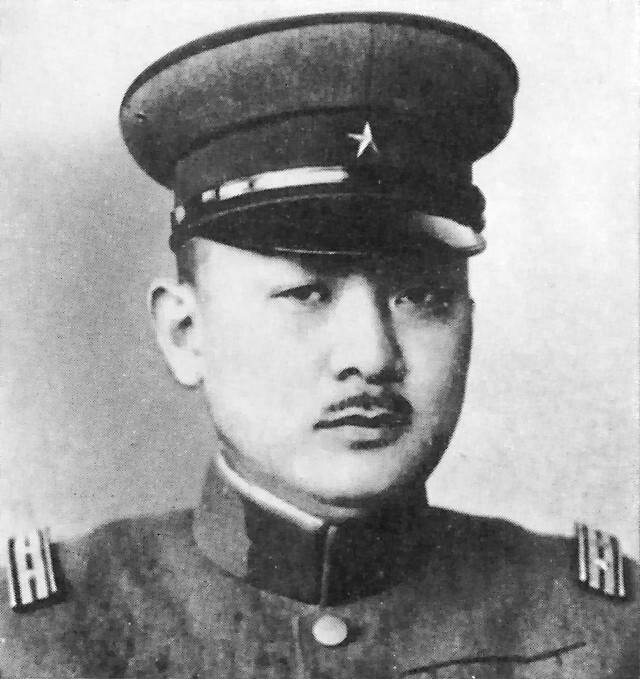 One of the great mysteries of the battle lies with the Island’s Japanese commander, Lieutenant General Tadamichi Kuribayashi. Accounts of his final days before the island was declared secure vary. One source suggests he committed seppuku at his headquarters, but most likely he died leading a final, three-pronged attack on Marine positions in the early morning of March 26th. His body was never found, or identified. Kuribayashi’s stout defense of Iwo Jima earned him a place of reverence in Japanese Military History alongside Admiral Yamamoto.
One of the great mysteries of the battle lies with the Island’s Japanese commander, Lieutenant General Tadamichi Kuribayashi. Accounts of his final days before the island was declared secure vary. One source suggests he committed seppuku at his headquarters, but most likely he died leading a final, three-pronged attack on Marine positions in the early morning of March 26th. His body was never found, or identified. Kuribayashi’s stout defense of Iwo Jima earned him a place of reverence in Japanese Military History alongside Admiral Yamamoto.
Thank you so much for reading! I hope you learned something new about the battle, and I hope to see you next time!

